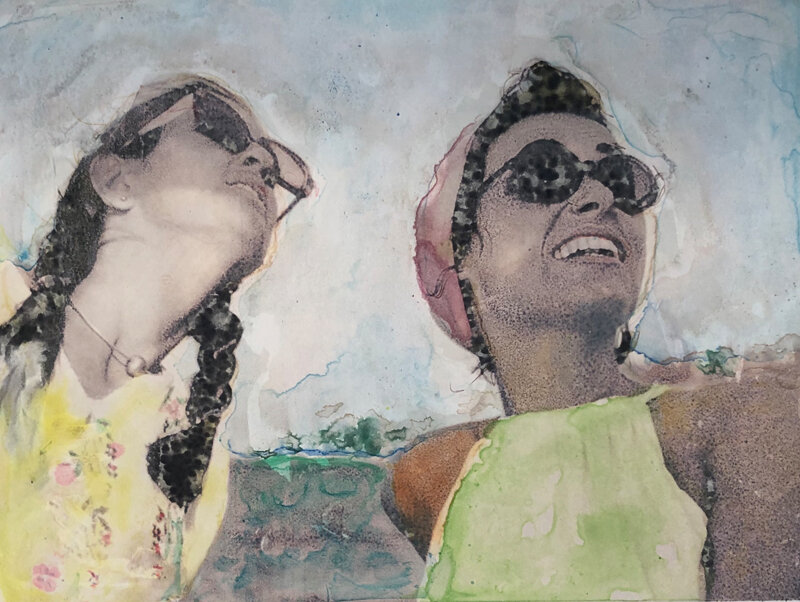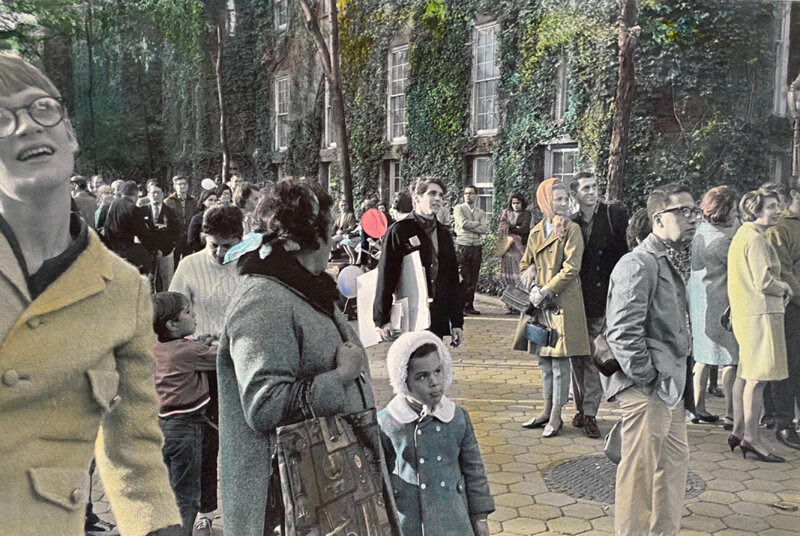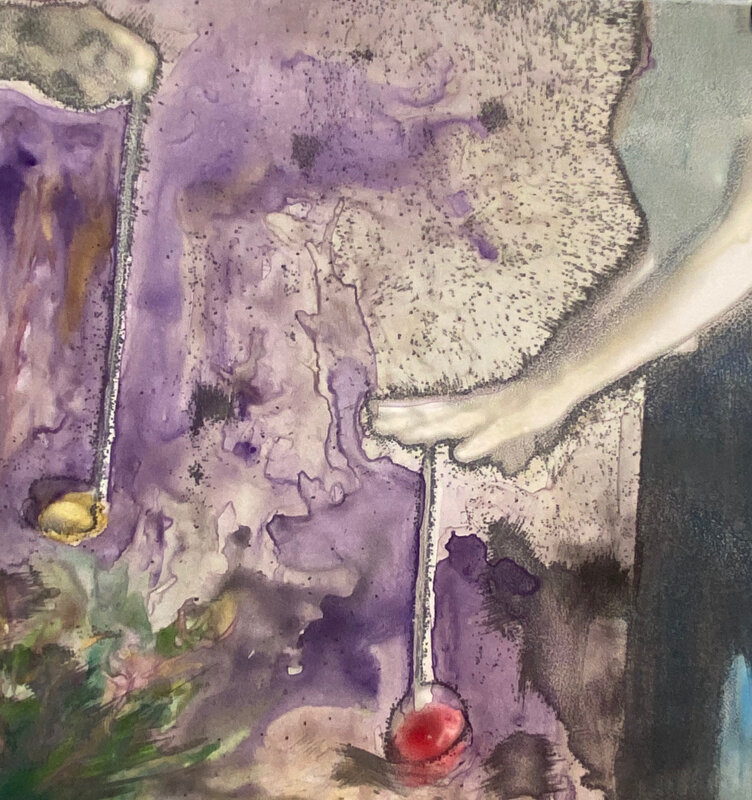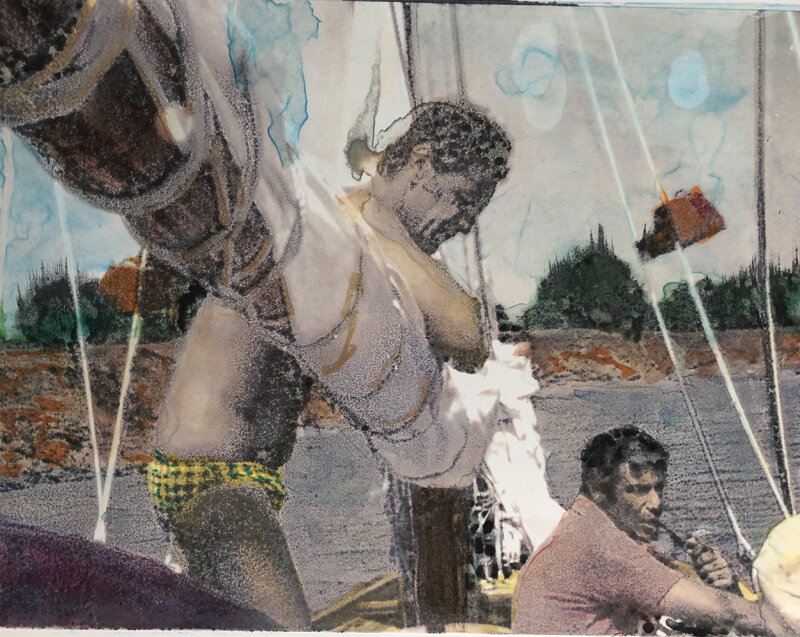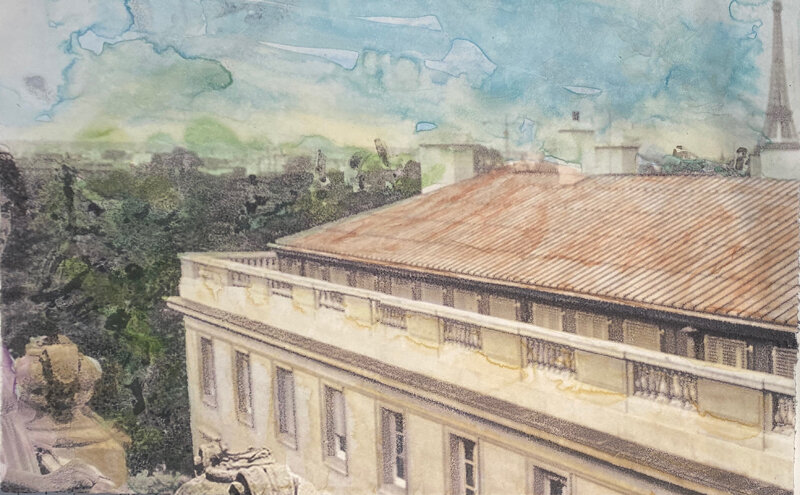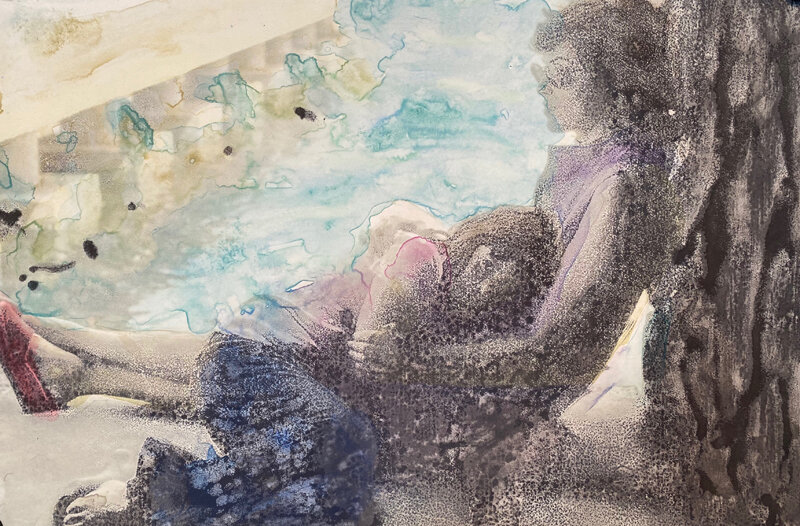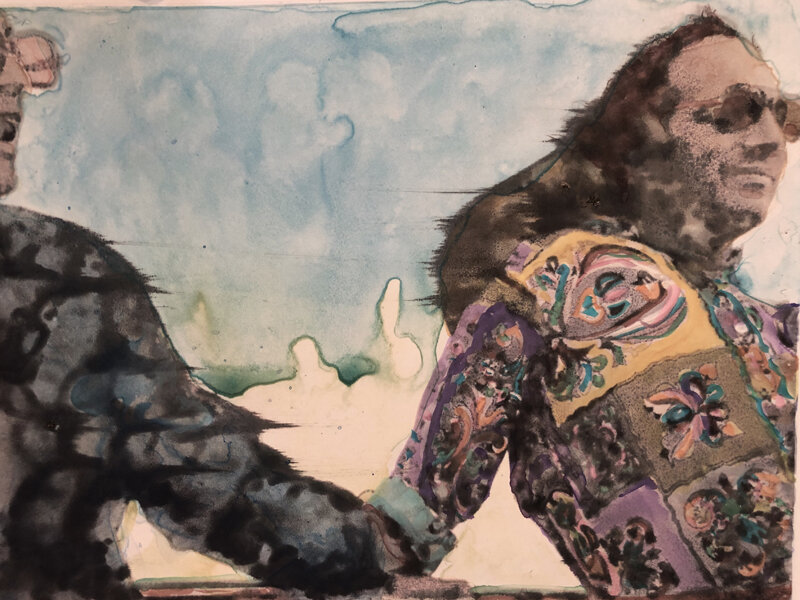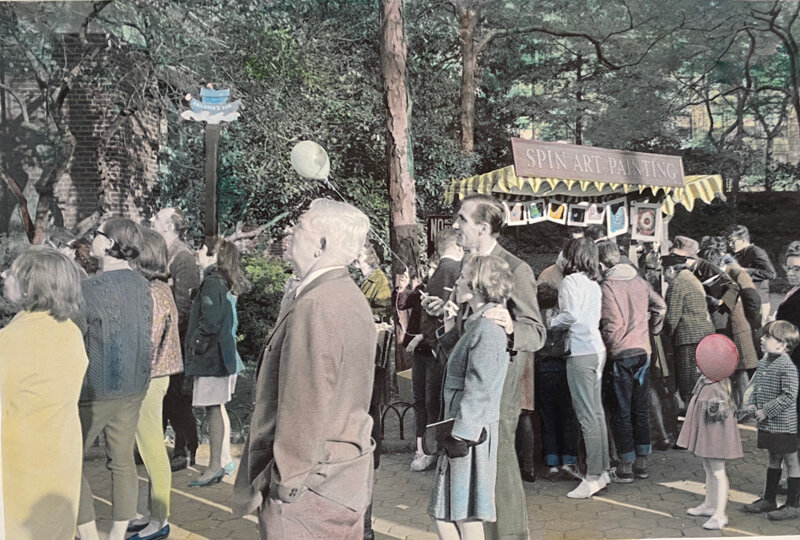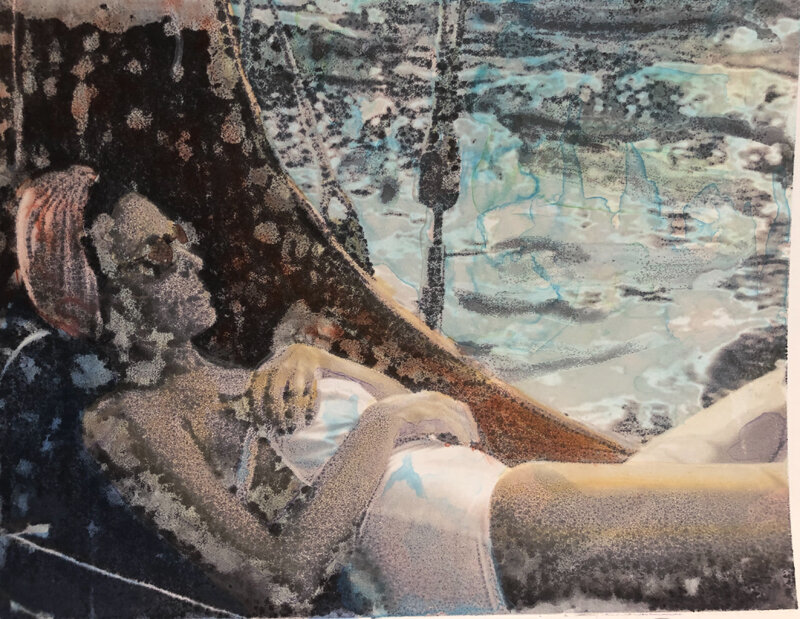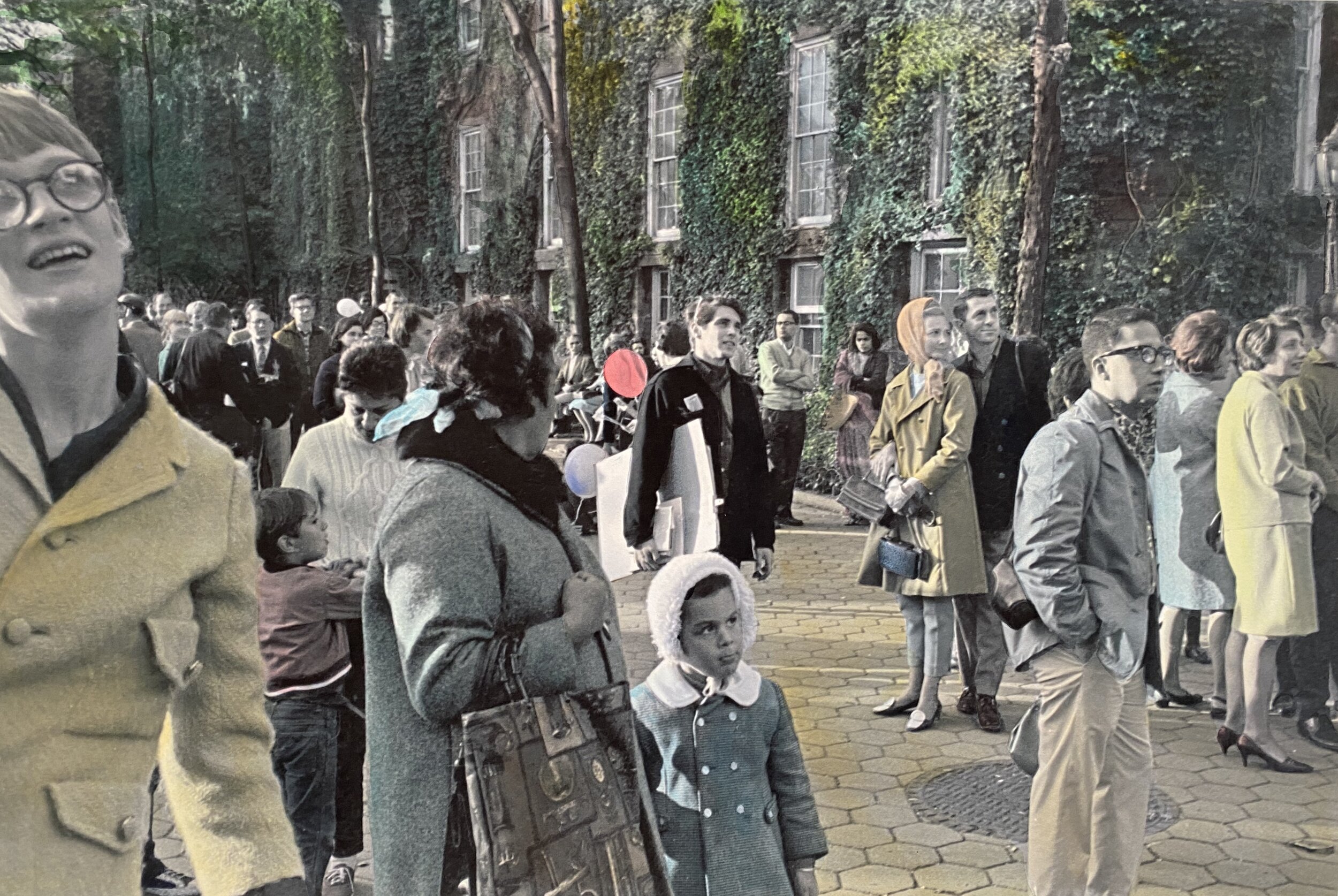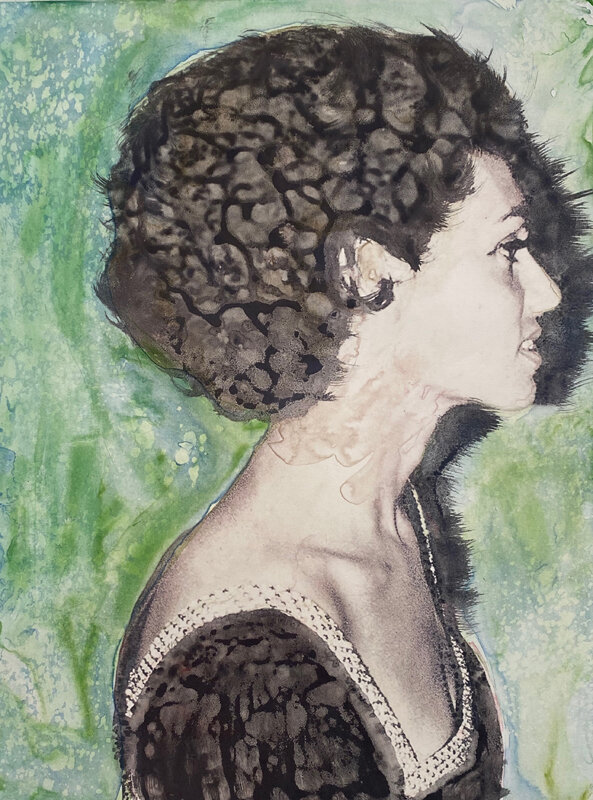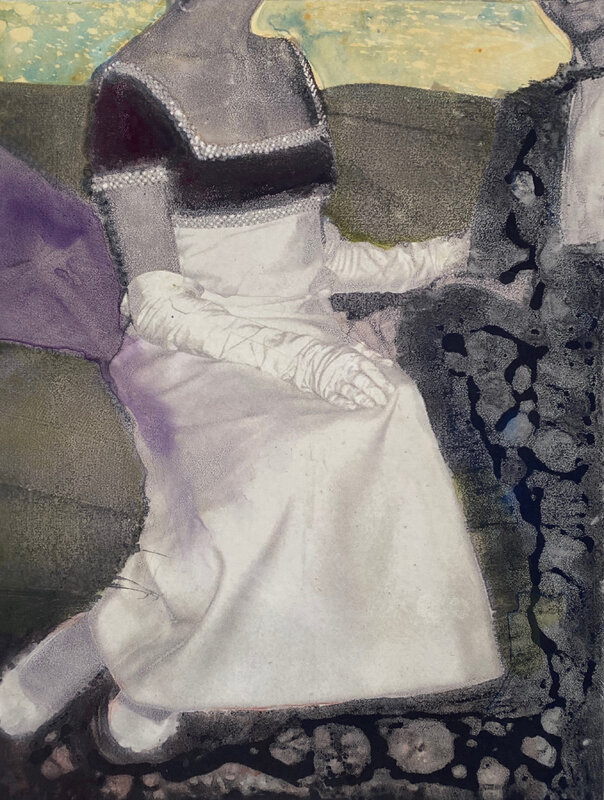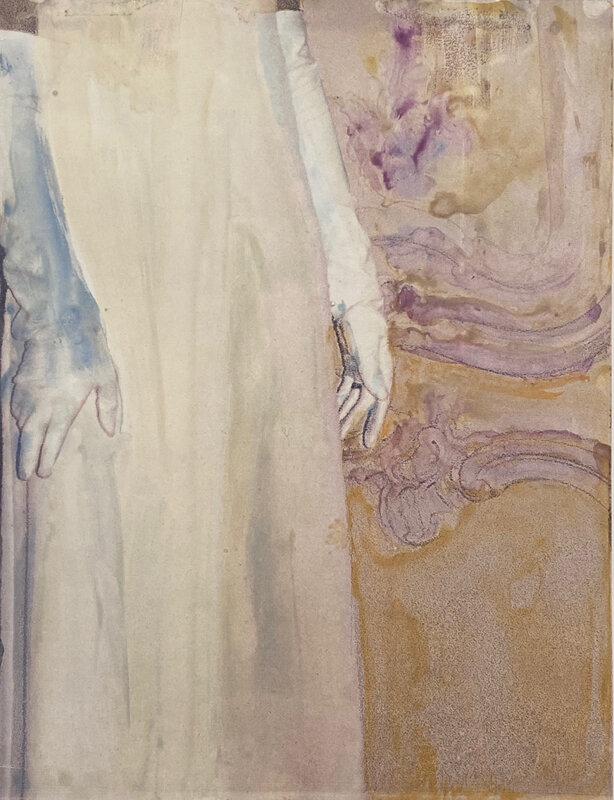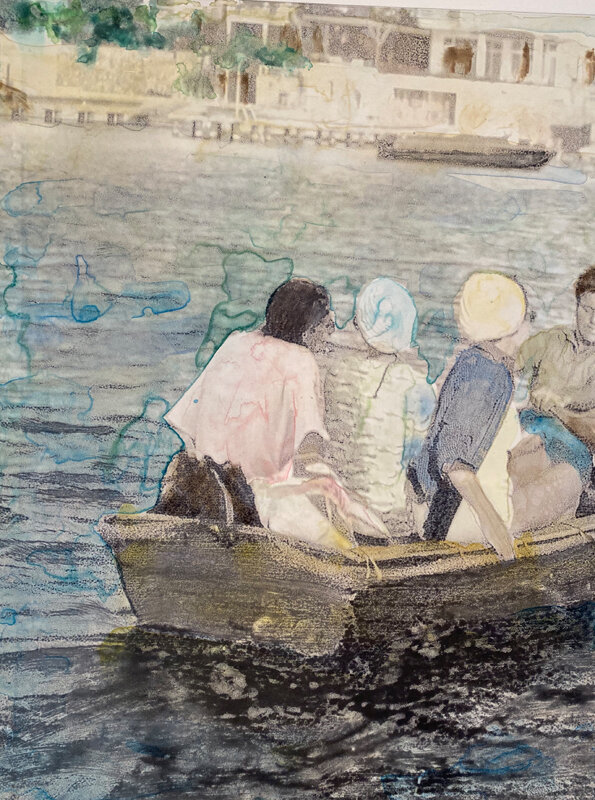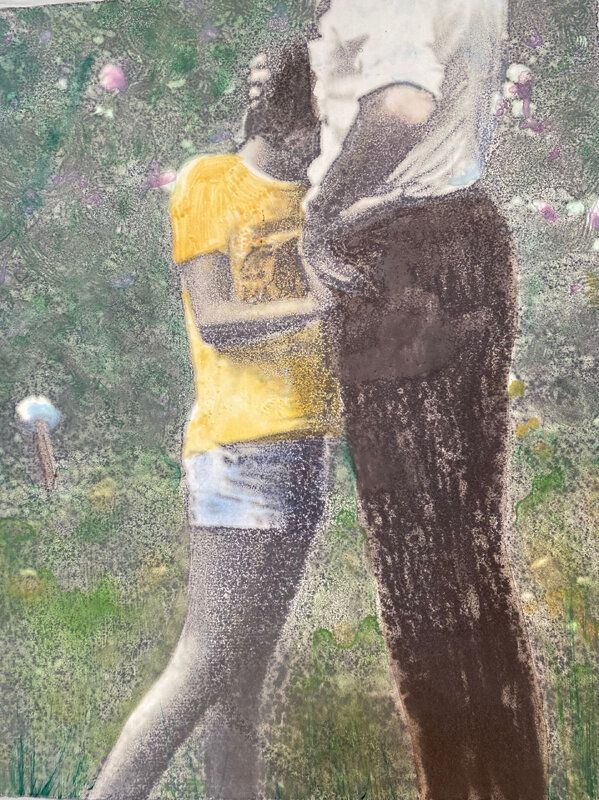Time Elastic
18 Photo-based monoprints
by Bellamy Printz
CLICK HERE TO READ THE CAN JOURNAL ARTICLE ABOUT TIME ELASTIC
shown spring 2020
The dialogue between the present and past has always been at the core of my work. As the only child of only children, I am the disorganized archivist, the ersatz hunter, discovering the prize by mistake and happily reveling in the riches of my quarry—the intrigue of images taken of and by my parents and grandparents, dating back over a century. And so I recontextualize them--the embedded aura of a straight photographic original lifted--and I reengage in a connective way, formally and emotionally.
Amidst the digital image onslaught in cell phones and data clouds, I still feel the pull of the physical object as a talisman, a source of inspiration and exploration. These are the precious objects we prioritize to take in an emergency, to store in safe deposit boxes. Losing them means relying on my own recollections of essential experiences. After living through my father’s progressive Alzheimer’s, the thought of trusting my memory is terrifying.
Previously unknown family photographs—recently found buried in boxes of slides and sleeves of negatives—has sparked this new body of work. The unearthed analog remnants, for years stored loose and only protected by drug store envelopes, reveals threads of personal history I had not remembered or even known. The discovery of the roll of film that included what has become an iconic portrait of my mother in her opera gown and gloves, was revelatory. In this strip of color negatives I found my mother’s shadowy profile, shot only seconds before. Her full-length figure, printed as an 8 x 10 and glued into an album—so familiar that it is etched into my consciousness—saw my father’s last visible flash of recognition before he slipped away from me forever. Ironically, this photo holds none of the elusive attraction that the long-ignored throwaway frames do. These ephemeral moments, captured 50 years ago, are now the source materials for my visual excavations.
These clips of time exposed are universal experiences, sometimes displayed, often just filed away: delicate life souvenirs we alight on as we observe the low angle of your young child’s first time with the camera, the stolen snapshot taken when she is sleeping, or the embrace that is interrupted by the click of the shutter. In every instance, we remind ourselves: the film, the photographer, and the people were there.
How the work is made:
First, I scanned these found family photographs into Photoshop, transporting and translating hidden evidence for present reading. I use the image as a basis for watercolor paintings on vellum, often made in two separate layers, which are then run through an etching press. The photographic image now recreated is printed out on a sheet of Yupo paper. The inks are not absorbed fully and can be manipulated or left alone to be run through the press over the watercolor monoprints. The resulting patterns and flow of black ink is spontaneous and often surprising. By working with this technique, no final piece is the same.
~ Bellamy Printz, 2020
